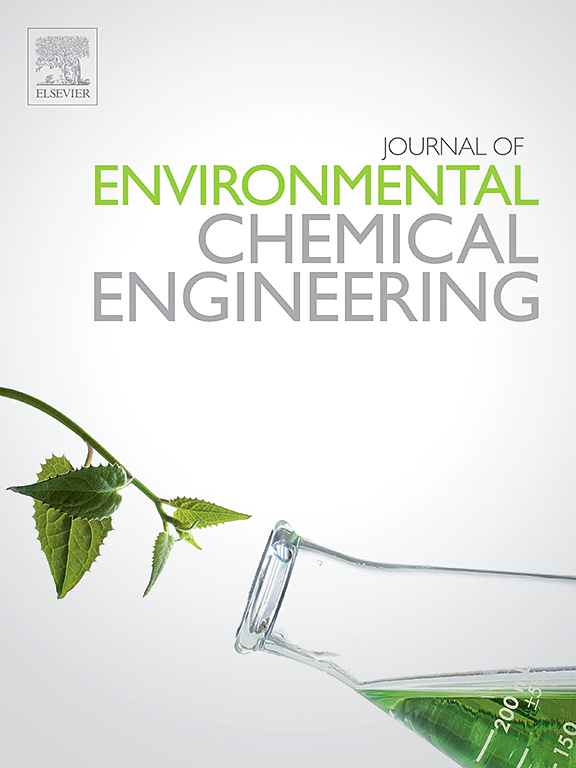The evolution and research hotspots of perfluorinated compounds (PFCs): Health risks, environmental behavior, and collaborative effort
IF 7.2
2区 工程技术
Q1 ENGINEERING, CHEMICAL
引用次数: 0
Abstract
To systematically analyze the development trajectory and knowledge structure of health risk research on perfluorinated compounds (PFCs), this study conducted a bibliometric analysis of 655 articles published between 2014 and 2024 in the Web of Science Core Collection, using CiteSpace, VOSviewer, and Bibliometrix. The results reveal a global research landscape characterized by a China–U.S. dual-core structure, with limited participation from low-income countries and international collaboration predominantly centered around China–U.S. partnerships. Research themes have shifted from environmental behavior analysis to health risk assessment, with molecular toxicological mechanisms and advanced degradation technologies emerging as new frontiers. Four major knowledge clusters were identified: (1) the multi-source nature of exposure pathways, (2) multi-organ toxicological effects, (3) challenges in the accuracy and standardization of detection technologies, and (4) bottlenecks in multi-type treatment approaches. Given the current geographical imbalances and technological gaps, this study recommended to establish an international mutual recognition system for portable detection devices to address monitoring gaps, advocate for the inclusion of C9-C14 long-chain perfluorinated chemicals in the Stockholm Convention, and establish a cross-border technology transfer fund to accelerate the standardization of degradation processes, thereby providing a cross-border cooperation pathway for global emerging pollutant management.
全氟化合物的演变与研究热点:健康风险、环境行为与协同努力
为系统分析全氟化合物(PFCs)健康风险研究的发展轨迹和知识结构,本研究利用CiteSpace、VOSviewer和Bibliometrix对Web of Science核心文集2014 - 2024年间发表的655篇论文进行了文献计量学分析。研究结果揭示了以中美关系为特征的全球研究格局。双核结构,低收入国家的参与有限,国际合作主要以中美为中心。伙伴关系。研究主题已从环境行为分析转向健康风险评估,分子毒理学机制和先进降解技术成为新的前沿。研究确定了四个主要的知识集群:(1)暴露途径的多源性,(2)多器官毒理学效应,(3)检测技术的准确性和标准化挑战,以及(4)多类型治疗方法的瓶颈。鉴于目前的地域不平衡和技术差距,本研究建议建立便携式检测装置的国际互认系统,以弥补监测差距,倡导将C9-C14长链全氟化学品纳入《斯德哥尔摩公约》,并建立跨境技术转让基金,以加速降解过程的标准化。从而为全球新兴污染物管理提供了跨境合作的途径。
本文章由计算机程序翻译,如有差异,请以英文原文为准。
求助全文
约1分钟内获得全文
求助全文
来源期刊

Journal of Environmental Chemical Engineering
Environmental Science-Pollution
CiteScore
11.40
自引率
6.50%
发文量
2017
审稿时长
27 days
期刊介绍:
The Journal of Environmental Chemical Engineering (JECE) serves as a platform for the dissemination of original and innovative research focusing on the advancement of environmentally-friendly, sustainable technologies. JECE emphasizes the transition towards a carbon-neutral circular economy and a self-sufficient bio-based economy. Topics covered include soil, water, wastewater, and air decontamination; pollution monitoring, prevention, and control; advanced analytics, sensors, impact and risk assessment methodologies in environmental chemical engineering; resource recovery (water, nutrients, materials, energy); industrial ecology; valorization of waste streams; waste management (including e-waste); climate-water-energy-food nexus; novel materials for environmental, chemical, and energy applications; sustainability and environmental safety; water digitalization, water data science, and machine learning; process integration and intensification; recent developments in green chemistry for synthesis, catalysis, and energy; and original research on contaminants of emerging concern, persistent chemicals, and priority substances, including microplastics, nanoplastics, nanomaterials, micropollutants, antimicrobial resistance genes, and emerging pathogens (viruses, bacteria, parasites) of environmental significance.
 求助内容:
求助内容: 应助结果提醒方式:
应助结果提醒方式:


